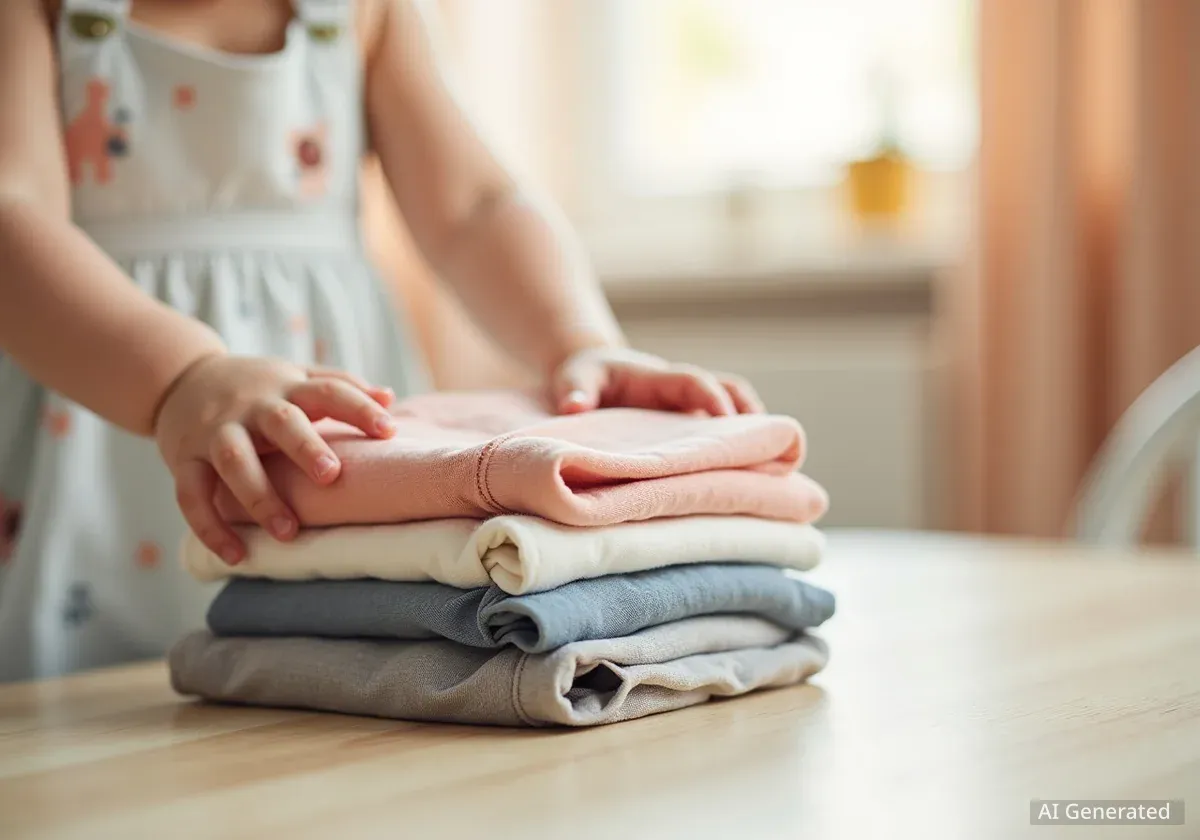Choosing the right underwear for a child is a fundamental decision that directly impacts their daily comfort, hygiene, and overall well-being. While often seen as a simple purchase, factors such as fabric composition, construction quality, and fit play a critical role, especially for toddlers and young children with sensitive skin who are constantly active.
Understanding the key characteristics of quality children's undergarments can help parents make informed choices that prioritize comfort and durability. This guide examines the essential elements to consider, from the benefits of specific material blends to the importance of design features that prevent irritation and ensure a long-lasting product.
Key Takeaways
- Material Matters: A blend of 95% cotton and 5% spandex is often recommended for children's underwear, providing a balance of breathability, softness, and flexible stretch.
- Design for Comfort: Seamless or one-piece construction, particularly in the back, helps prevent skin irritation and chafing for active children.
- Durability is Key: A high-quality, flexible elastic waistband and precision stitching ensure the underwear maintains its shape and fit through repeated washing and wear.
- Care and Hygiene: While many products are machine washable, hand washing is often suggested to maintain fabric integrity and ensure optimal hygiene for children's undergarments.
The Critical Role of Fabric in Children's Apparel
The first point of contact with a child's skin is their clothing, making fabric selection one of the most important factors for parents. For undergarments, which are worn close to the body for extended periods, the material must be both gentle and functional.
Why Cotton Remains the Gold Standard
Cotton has long been the preferred material for children's clothing, and for good reason. As a natural fiber, it is known for its exceptional breathability. This quality allows air to circulate freely, which helps to regulate body temperature and reduce the buildup of moisture. For children, this is crucial for preventing skin irritation and discomfort, particularly during active play or in warm weather.
According to textile experts, cotton is also hypoallergenic, meaning it is less likely to cause allergic reactions on sensitive skin. Its soft texture provides a comfortable feel that is ideal for everyday wear.
Fabric Facts: Cotton and Spandex Blend
A common and highly effective fabric blend for children's underwear is 95% cotton and 5% spandex. This combination leverages the strengths of both materials. The cotton provides softness and breathability, while the small percentage of spandex introduces elasticity. This allows the garment to stretch and move with the child's body without losing its shape, ensuring a snug yet non-restrictive fit.
The Function of Spandex in Modern Textiles
While cotton offers comfort, the addition of spandex (also known as elastane or Lycra) provides necessary functionality. A small amount, typically around 5%, gives the fabric stretch and recovery. This means the underwear can adapt to a child’s movements—whether running, jumping, or sitting—and then return to its original shape. This feature not only enhances comfort but also contributes significantly to the garment's durability and long-term fit.
Construction and Design Features for Optimal Comfort
Beyond the fabric itself, the way a garment is constructed determines its comfort and practicality. For children's underwear, specific design choices can make a significant difference in their daily experience.
The Advantage of Seamless Construction
Many children are sensitive to the feel of seams against their skin. Traditional multi-panel underwear often has seams in areas that can cause friction and irritation, especially for toddlers who are constantly in motion. A seamless, one-piece back design is an innovative solution to this common problem.
By eliminating seams in the rear panel, this design creates a smooth surface that fits comfortably against the skin. This minimizes the risk of chafing and discomfort, making it an ideal feature for children who are potty training or simply need all-day comfort for school and play.
Prioritizing a Child-Centric Fit
Children's bodies are proportioned differently than adults', and they are far more active. Garments designed for them must accommodate a wide range of motion without riding up or causing restriction. Thoughtful design elements, such as seamless panels and flexible waistbands, are not just about comfort—they are about allowing children the freedom to move and play without being distracted by their clothing.
Evaluating the Waistband and Stitching
The waistband is another critical component of children's underwear. A poorly designed elastic can be too tight, digging into the skin and leaving marks, or too loose, failing to keep the underwear in place. A high-quality, flexible elastic waistband is essential for a secure yet gentle fit.
Look for waistbands that are encased in fabric to prevent the elastic from directly touching the skin. The elastic should be strong enough to resist deformation after many washes but pliable enough to not constrict the child's waist. Similarly, precision stitching throughout the garment indicates a higher level of quality and durability, ensuring that seams at the leg openings and waistband will not unravel over time.
Practical Considerations for Parents
When selecting underwear for children, functionality and ease of care are just as important as comfort and material. Parents need products that can withstand the rigors of daily use and frequent laundering.
Sizing and Fit for Growing Children
Proper sizing is crucial. Underwear that is too small will be restrictive and uncomfortable, while underwear that is too large can bunch up under clothing and will not stay in place. It is important to consult size charts provided by the manufacturer, which typically correspond to age or height and weight measurements (e.g., 2T, 3T, 4T, 5T, 6 Years, 8 Years).
- Check Measurements: If possible, measure your child's waist and compare it to the brand's sizing guide.
- Allow for Growth: While a snug fit is important, consider that children grow quickly. Avoid buying sizes that are already tight.
- Observe Comfort: After your child wears a new pair, check for any red marks on their skin, which could indicate the fit is too tight.
Washing and Maintenance for Longevity
Children's underwear requires frequent washing, and proper care can extend the life of the garments while maintaining hygiene.
"While most modern cotton-blend undergarments are machine washable for convenience, hand washing with a mild detergent is often recommended for better hygiene and to preserve the elasticity and softness of the fabric over time."
Following care instructions helps keep the underwear fresh, clean, and in good condition. For machine washing, using a gentle cycle and cool water can help prevent shrinking and protect the elastic fibers. This ensures that the investment in quality underwear provides lasting comfort and value for your child.





